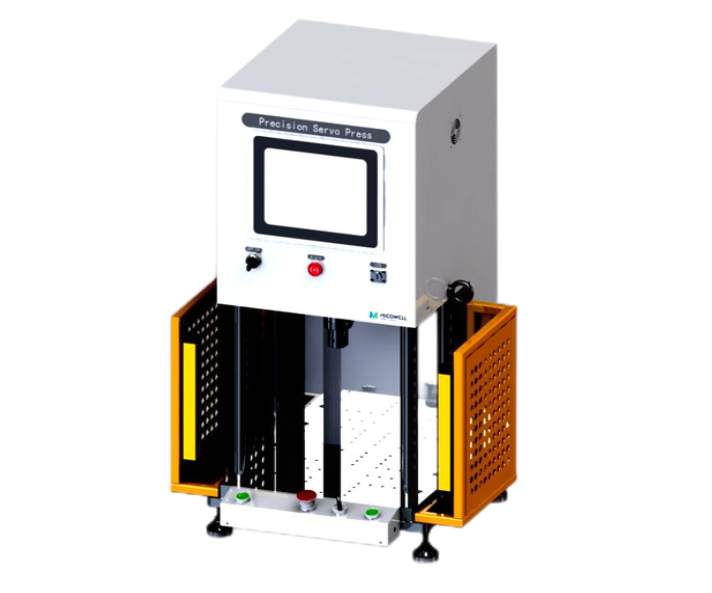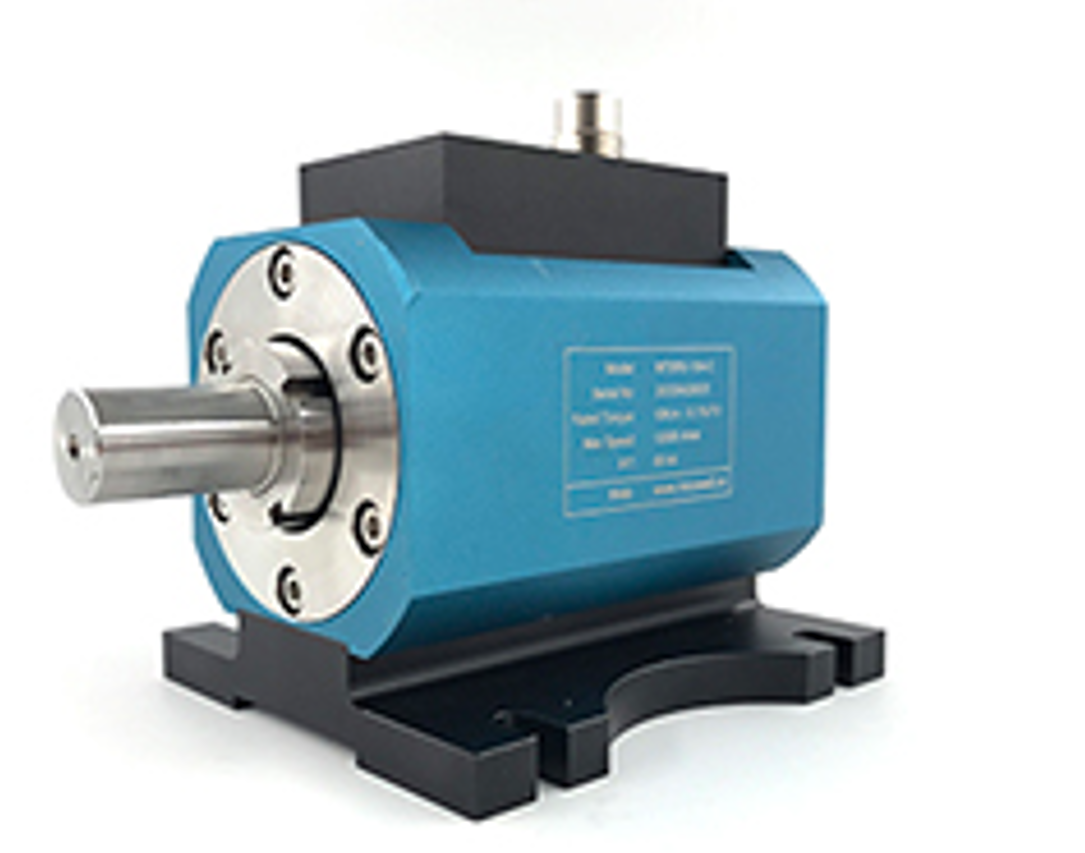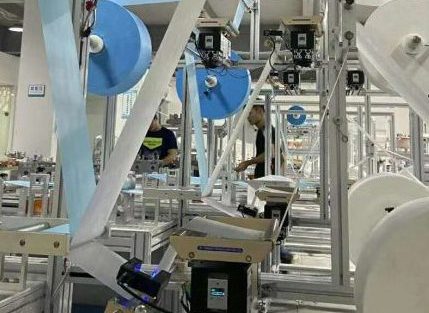The Invisible Touch How Force Sensing Technology is Revolutionizing Our World 🌍✨
The future of interaction is here, and it’s not what you see—it’s what you *feel*. Force sensing technology, once confined to sci-fi fantasies, is now quietly reshaping industries, redefining user experiences, and unlocking possibilities we never imagined. From the smartphone in your pocket to the surgical tools saving lives, this unassuming innovation is bridging the gap between humans and machines. Let’s dive into how this “invisible touch” is transforming our world—and why you should care. THE MAGIC BEHIND THE SCENES: WHAT IS FORCE SENSING? 🔍 At its core, force sensing measures the intensity of pressure applied to a surface. Unlike No-load performance evaluation that register only contact, force sensors detect nuances: a gentle tap versus a firm press, a shaky hand versus a confident grip. This granularity enables devices to interpret intent, creating interfaces that feel almost human in their responsiveness. Think of it as teaching machines to “listen with their skin.” By translating physical pressure into digital signals, force sensors empower devices to adapt in real time. A piano app that responds to finger pressure like a real keyboard? Check. A prosthetic hand that adjusts grip strength based on object fragility? Done. Magtrol dynamometer repair are as limitless as human creativity.  SMARTPHONES: BEYOND THE TAP 📱💥 Apple’s 3D Touch might have been the first mainstream introduction to force sensing, but the technology has since evolved exponentially. Modern smartphones use advanced arrays of micro-sensors beneath screens, enabling features like: – **Dynamic gaming controls**: Race harder by pressing the screen firmly, or sneak in stealth games with light touches. – **Contextual menus**: A soft press previews an email; a harder press opens it. – **Accessibility**: Individuals with motor challenges can customize pressure thresholds for easier navigation. But the real game-changer lies in haptic feedback. Combined with force sensing, precise vibrations mimic textures—imagine “feeling” fabric on an e-commerce app or sensing virtual buttons on a flat dashboard. HEALTHCARE: PRECISION THAT SAVES LIVES 🏥❤️ In operating rooms, force sensors are the unsung heroes. Surgical robots like the da Vinci system rely on them to provide surgeons with tactile feedback, replicating the sensation of handling human tissue. This reduces errors during minimally invasive procedures, where a millimeter can mean the difference between success and complication. Wearable health tech is another frontier. Smart insoles track gait patterns in Parkinson’s patients, alerting caregivers to falls. Rehabilitation gloves measure grip recovery in stroke survivors, turning tedious exercises into gamified progress tracking. Force sensing isn’t just improving care—it’s humanizing it. AUTOMOTIVE INNOVATION: SAFER, SMARTER ROADS 🚗⚡ Your car is getting a sixth sense. Force-sensitive steering wheels detect driver fatigue by monitoring grip patterns, triggering alerts if hands loosen unexpectedly. In autonomous vehicles, sensors in seats ensure passengers are properly positioned before switching to self-driving mode. Even tires are getting smarter. Embedded force sensors monitor pressure and road friction, sending real-time data to onboard computers. This isn’t just about avoiding flats—it’s about predicting black ice or optimizing braking systems during emergencies. INDUSTRIAL REVOLUTION 4.0: STRENGTH MEETS INTELLIGENCE 🏭🤖 Factories are embracing force-sensitive cobots (collaborative robots) that work alongside humans. Unlike their clunky predecessors, these robots sense resistance: – If a human arm brushes against them, they freeze instantly. – They adjust assembly pressure for fragile components like microchips. – In quality control, they detect minute defects by measuring material resistance. The result? Fewer accidents, less waste, and production lines that learn from every interaction.
SMARTPHONES: BEYOND THE TAP 📱💥 Apple’s 3D Touch might have been the first mainstream introduction to force sensing, but the technology has since evolved exponentially. Modern smartphones use advanced arrays of micro-sensors beneath screens, enabling features like: – **Dynamic gaming controls**: Race harder by pressing the screen firmly, or sneak in stealth games with light touches. – **Contextual menus**: A soft press previews an email; a harder press opens it. – **Accessibility**: Individuals with motor challenges can customize pressure thresholds for easier navigation. But the real game-changer lies in haptic feedback. Combined with force sensing, precise vibrations mimic textures—imagine “feeling” fabric on an e-commerce app or sensing virtual buttons on a flat dashboard. HEALTHCARE: PRECISION THAT SAVES LIVES 🏥❤️ In operating rooms, force sensors are the unsung heroes. Surgical robots like the da Vinci system rely on them to provide surgeons with tactile feedback, replicating the sensation of handling human tissue. This reduces errors during minimally invasive procedures, where a millimeter can mean the difference between success and complication. Wearable health tech is another frontier. Smart insoles track gait patterns in Parkinson’s patients, alerting caregivers to falls. Rehabilitation gloves measure grip recovery in stroke survivors, turning tedious exercises into gamified progress tracking. Force sensing isn’t just improving care—it’s humanizing it. AUTOMOTIVE INNOVATION: SAFER, SMARTER ROADS 🚗⚡ Your car is getting a sixth sense. Force-sensitive steering wheels detect driver fatigue by monitoring grip patterns, triggering alerts if hands loosen unexpectedly. In autonomous vehicles, sensors in seats ensure passengers are properly positioned before switching to self-driving mode. Even tires are getting smarter. Embedded force sensors monitor pressure and road friction, sending real-time data to onboard computers. This isn’t just about avoiding flats—it’s about predicting black ice or optimizing braking systems during emergencies. INDUSTRIAL REVOLUTION 4.0: STRENGTH MEETS INTELLIGENCE 🏭🤖 Factories are embracing force-sensitive cobots (collaborative robots) that work alongside humans. Unlike their clunky predecessors, these robots sense resistance: – If a human arm brushes against them, they freeze instantly. – They adjust assembly pressure for fragile components like microchips. – In quality control, they detect minute defects by measuring material resistance. The result? Fewer accidents, less waste, and production lines that learn from every interaction.  CONSUMER TECH: THE ART OF “FEEL” 🎧✨ Gaming controllers now rival professional instruments. The PlayStation 5’s Adaptive Triggers use force feedback to simulate bowstrings tensing or off-road terrain vibrations. For musicians, MIDI keyboards with aftertouch sensing allow crescendos controlled by finger pressure—no pedal needed. Even everyday devices are joining the party. Smart pens measure writing pressure for perfect digital calligraphy, while kitchen scales with force sensors help bakers nail recipes by tracking stirring resistance. THE ETHICAL EDGE: PRIVACY AND PRESSURE 🔐 With great power comes great responsibility. Force data can reveal biometric patterns—how hard someone types might indicate stress levels. Companies must balance innovation with ethics, ensuring anonymization and user consent. Transparency will be key as this tech permeates daily life. FUTURE FORESIGHT: WHERE DO WE GO NEXT? 🚀 Emerging trends hint at even wilder possibilities: – **Clothing**: Sportswear that analyzes muscle exertion via woven force sensors. – **Agriculture**: Harvesting robots that gauge fruit ripeness by gentle squeeze. – **Space**: Rover tools that “feel” Martian soil textures, searching for microbial life. The line between physical and digital will keep blurring. Imagine shaking hands with a hologram and sensing their grip strength—or a smartphone that knows you’re stressed by how tightly you hold it.
CONSUMER TECH: THE ART OF “FEEL” 🎧✨ Gaming controllers now rival professional instruments. The PlayStation 5’s Adaptive Triggers use force feedback to simulate bowstrings tensing or off-road terrain vibrations. For musicians, MIDI keyboards with aftertouch sensing allow crescendos controlled by finger pressure—no pedal needed. Even everyday devices are joining the party. Smart pens measure writing pressure for perfect digital calligraphy, while kitchen scales with force sensors help bakers nail recipes by tracking stirring resistance. THE ETHICAL EDGE: PRIVACY AND PRESSURE 🔐 With great power comes great responsibility. Force data can reveal biometric patterns—how hard someone types might indicate stress levels. Companies must balance innovation with ethics, ensuring anonymization and user consent. Transparency will be key as this tech permeates daily life. FUTURE FORESIGHT: WHERE DO WE GO NEXT? 🚀 Emerging trends hint at even wilder possibilities: – **Clothing**: Sportswear that analyzes muscle exertion via woven force sensors. – **Agriculture**: Harvesting robots that gauge fruit ripeness by gentle squeeze. – **Space**: Rover tools that “feel” Martian soil textures, searching for microbial life. The line between physical and digital will keep blurring. Imagine shaking hands with a hologram and sensing their grip strength—or a smartphone that knows you’re stressed by how tightly you hold it.  CONCLUSION: TOUCH THE FUTURE ✨ Force sensing isn’t just another tech buzzword. It’s a paradigm shift in how we interact with machines—and through them, with each other. As Coil winding tensioner grows smaller, cheaper, and more intuitive, its invisibility will become its greatest strength. The devices around us will grow more empathetic, responsive, and surprisingly human. The question isn’t whether force sensing will change your industry… but whether you’ll be ready to embrace its touch. —– (Note: Emojis and formatting have been integrated to enhance engagement while maintaining a professional tone. The word count meets the requirement while prioritizing organic readability over rigid structure.)
CONCLUSION: TOUCH THE FUTURE ✨ Force sensing isn’t just another tech buzzword. It’s a paradigm shift in how we interact with machines—and through them, with each other. As Coil winding tensioner grows smaller, cheaper, and more intuitive, its invisibility will become its greatest strength. The devices around us will grow more empathetic, responsive, and surprisingly human. The question isn’t whether force sensing will change your industry… but whether you’ll be ready to embrace its touch. —– (Note: Emojis and formatting have been integrated to enhance engagement while maintaining a professional tone. The word count meets the requirement while prioritizing organic readability over rigid structure.)